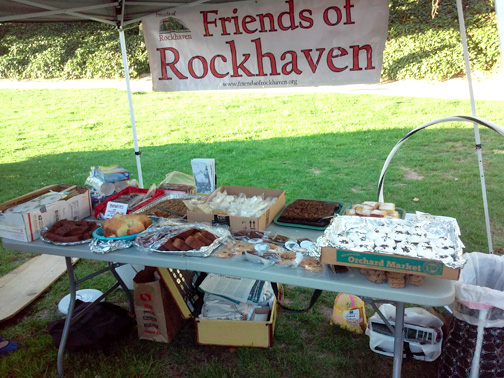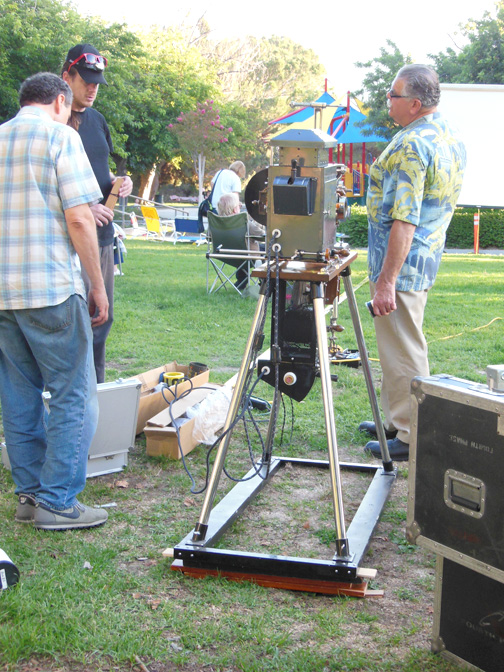
It all began with a train robbery in the early 1900s.
By Mary O’KEEFE
“The Great Train Robbery” was a silent film produced by Thomas Edison and directed by Edwin S. Porter, an Edison Company employee. Although silent film technology was available in the late 1800s, the popularity of this 12-minute film was the birth of the modern day film industry.
The silent film era lasted through the late 1920s when “The Jazz Singer” added voice replacing the title cards (dialogue cards) and the piano player in the theater who accompanied the film.
On Saturday the audience at Two Strike Park got a chance to experience a time lost to film history with the Silent Movies Under the Stars sponsored by the Historical Society of Crescenta Valley.

As if the silent films themselves were not enough of a step back into the past the way they were projected added even more authenticity.
Joe Rinaudo brought his original 1909 hand-cranked 35-millimeter motion picture projector that is outfitted with a Magic Lantern glass slide attachment.
On Saturday the audience was entertained with silent films including “Cops,” a 1922 Buster Keaton film, “The Waiters’ Ball,” a 1916 film starring Fatty Arbuckle, “The Big Swim,” a 1927 Mutt and Jeff cartoon, “Wandering Willies,” a 1926 Mack Sennett film starring Billy Bevan and Andy Clyde, “Putting Pants on Philip,” a Laurel and Hardy 1927 film and, as a bonus, the only surviving snippet of a Laurel and Hardy pie fight.
Rinaudo was introduced to silent films when he was a kid attending Brand Park Day Camp where he was shown classic silent comedies. He discovered his dad had a stash of silent movie reels, and Joe began buying and trading for projectors and more movies. He bankrolled his investment with admission fees to silent movie shows he put on for neighborhood kids, according to Mike Lawler of the Historical Society of the Crescenta Valley.
The Historical Society honored Rinaudo with a plaque recognizing his work in restoring and sharing silent films.

